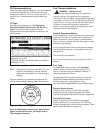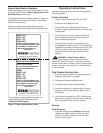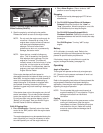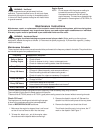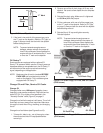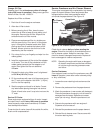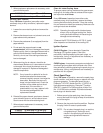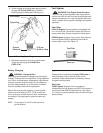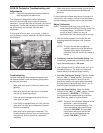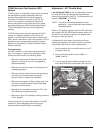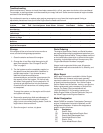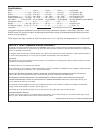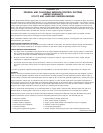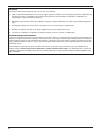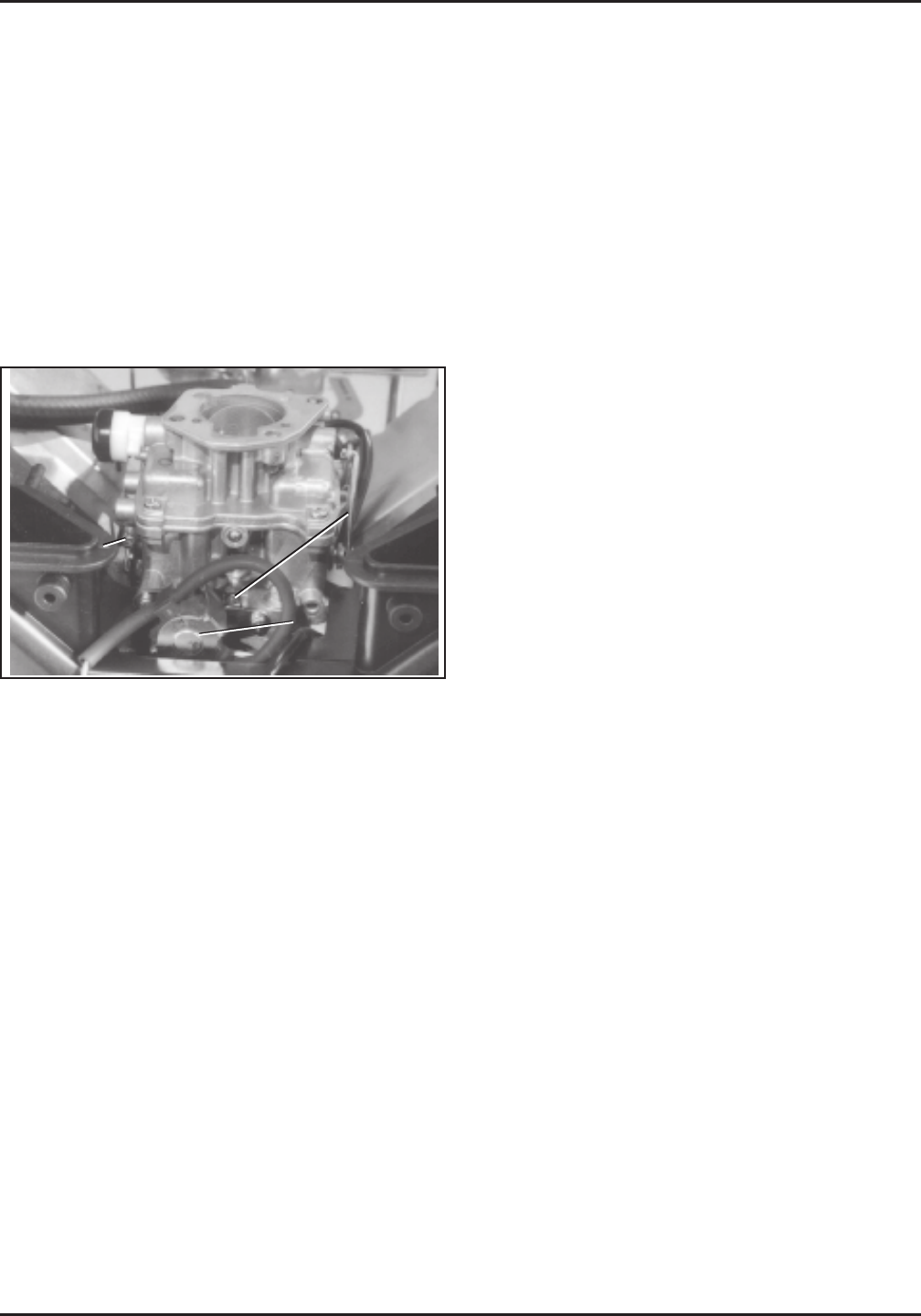
13
• Make sure the air cleaner element is clean and all
air cleaner element components are fastened
securely.
If, after checking the items listed above, the engine is
hard to start, runs roughly, or stalls at low idle speed, it
may be necessary to adjust or service the carburetor.
Adjust Carburetor
NOTE: Certified engines may have a fixed idle or
limiter cap on the idle fuel adjusting needle. Do
not attempt steps 1 and 2 below. Proceed
directly to step 3. Step 4 can only be
performed within the limits allowed by the cap.
1. With the engine stopped, turn the low idle fuel
adjusting needle in (clockwise) until it bottoms
lightly.
NOTE: The tip of the low idle fuel adjusting
needle is tapered to critical dimensions.
Damage to the needle and the seat in
carburetor body will result if the needle is
forced.
2. Preliminary Low Idle Fuel Needle Setting: Turn
the adjusting needle out (counterclockwise) from
lightly bottomed position 1-5/8 turns.
3. Start the engine and run at half throttle for 5 to 10
minutes to warm up. The engine must be warm
before making final settings (steps 4 and 5).
4. Low Idle Fuel Needle Setting: Place the throttle
into the “idle” or “slow” position. Turn the low
idle fuel adjusting needle in (slowly) from the
preliminary setting until engine speed decreases
and then back out approximately 3/4 to 1 turn to
obtain the best low-speed performance.
5. Low Idle Speed Setting: Place the throttle
control into the “idle” or “slow” position. Set the
low idle speed to 1200 RPM* (± 75 RPM) by
turning the low idle speed adjusting screw in or
out. Check the speed using a tachometer.
*NOTE: The actual low idle speed depends on the
application – refer to equipment
manufacturer’s recommendations. The
recommended low idle speed for basic
engines is 1200 RPM. To ensure best
results when setting the low idle fuel
needle, the low idle speed must not
exceed 1200 RPM (± 75 RPM).
CH18-25 Carburetor Troubleshooting and
Adjustments
NOTE: Carburetor adjustments should be made only
after the engine has warmed up.
The carburetor is designed to deliver the correct
fuel-to-air mixture to the engine under all operating
conditions. The high idle is set at the factory and cannot
be adjusted. The low idle fuel adjusting needle is also
set at the factory and normally does not need
adjustment.
If the engine is hard to start, runs roughly, or stalls at
low idle speed, it may be necessary to adjust or service
the carburetor.
Figure 13. Carburetor (CH18-25).
Troubleshooting
If engine troubles are experienced that appear to be
fuel system related, check the following areas before
adjusting the carburetor.
• Make sure the fuel tank is filled with clean, fresh
gasoline.
• Make sure the fuel tank cap vent is not blocked
and that it is operating properly.
• If the fuel tank is equipped with a shut-off valve,
make sure it is open.
• If the engine is equipped with an in-line fuel filter,
make sure it is clean and unobstructed. Replace
the filter if necessary.
• Make sure fuel is reaching the carburetor. This
includes checking the fuel lines and fuel pump for
restrictions or faulty components, replace as
necessary.
Low Idle
Speed Adj.
Screw
Low Idle
Fuel Adj.
Needle &
Spring
Fixed Main Jet
(under optional
solenoid)



